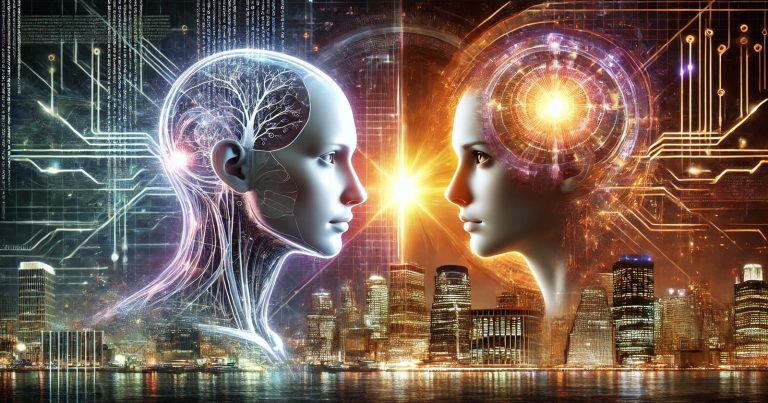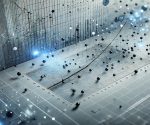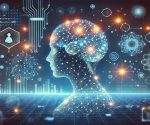Machines shall be known as human AI as they try to think, learn, or act like humans. This is a subset of AI that mimics how the human brain works. It learns from data, analyses problems, and makes intelligent decisions like humans. This brings us to the human artificial intelligence, a technology that imitates human thoughts, actions, and reactions. It attempts to mimic a human brain with machines and software.
AI is starting to take up a huge part of our daily life. From smartphones to large machines, AI is omnipresent. But can it ever be like us? Can it think like a human being? To grasp this, we must look at what AI is, how it functions differently compared to human thinking, and what the future holds as both work together.
What is Artificial Intelligence?
AI, or Artificial Intelligence, is a kind of computer program. It helps machines do cool stuff like human beings. AI can use data to learn, make decisions, and even talk or write like humans. It solves many problems and does more work within a short period.
AI is designed to mimic the way we think. Some AI tools can learn things just like we can. For example, AI already powers many of the things we use daily. For instance, when you ask your phone for something or a robot helps you in a factory, that’s AI.
How AI Works?
AI relies on something known as algorithms. These are techniques that guide the machine on how to think and act. It also uses data. The more data, the better it learns. If it sees a lot of pictures of cats, it knows what a cat looks like. Then, it can identify cats in new images.
AI can work in three ways:
- Type of AI Narrow – It carries out one task: face recognition.
- Generative AI — It learns information from the database and creates new data.
- Super AI – It is not yet a reality. They can make better decisions than humans.
We mostly use Narrow AI today. But people are trying to create General AI and possibly Super AI. These next-generation AIs might behave and reason more like we do.
AI in Real Life
AI helps in many fields:
- In health care, it interprets X-rays more quickly.
- In education, it improves kids’ learning.
- In banks, it finds fraud.
- It powers voice helpers in our homes, such as Alexa or Siri.
So, AI is altering how we all live and what we do.
Human Artificial Intelligence
Millions worry AI will take their jobs. But is that true? The future of human and artificial intelligence is less a battle than a collaboration. AI relies on something known as algorithms. These are techniques that guide the machine on how to think and act. It also uses data. The more data, the better it learns. If it sees a lot of pictures of cats, it knows what a cat looks like.
Will AI Replace Humans?
Some jobs may go. In factories and offices, machines are already at work. But new jobs will also come. This is not AI replacing humans but making work different.
AI can take over:
- Repetitive tasks
- Data work
- Simple decisions
But it cannot replace:
- Human touch
- Feelings
- Deep understanding
Well, humans working with AI is what cooperation is all about. Rather than lose to AI, we will learn to work with it.
Neuroscience, Human Behavior, and Artificial Intelligence
It observes what we do and learns our patterns. This changes how we act, too. So, with this connection, humans and AI become more natural.
Eventually, AI might read our moods, assist with mental health, or conversationalize as friends. It must, however, be governed carefully to respect our values.
Artificial Intelligence That Behaves Like Humans
Human-like AI is AI that attempts to think, speak, and act like a human. Some AI, as of today, can write stories, converse with users, and even tell jokes. But is it true understanding?
Comparison of Human and Artificial Intelligence Today
ChatGPT or modern AI or robots can be human-like. They are good conversationalists, memorize responses, and dispense advice. But they’re not understanding. There, human intelligence and AI do not work as they did.
- People experience pain, joy, and empathy. AI does not. It is just mimicking, even if it sounds genuine.
- So we’re close in form but not in soul. This is the sort of key difference between human cognition and AI.
The Dream and the Danger
Someday, AI might seem more authentic. But scientists are attempting to design machines that learn like babies do. They seek to connect the brain to artificial intelligence.
But this is hard. Our mind is more than just a computer. It cries, reaches, and roots in ways no AI can.
Artificial Intelligence vs Human Intelligence
Humans and AI can solve problems. But the way that they do it is very different. The topic of human versus artificial intelligence is not so simple. There are pros and cons to both.
Thinking Style
Humans rely on emotions, memories, and sensations. AI uses data and code in the way that AI vs human thinking was a calculator vs. a child. The calculator is quick — but it cannot touch.
Humans can:
- Feel emotions
- Think in creative ways
- Learn from little information
AI can:
- Work without rest
- Analyze huge data fast
- Follow patterns
Now, let’s have a simple table with this human-artificial intelligence comparison:
Thus, a battle between human intelligence and artificial intelligence does not exist. We are both good at different things. Together they are more powerful.
Humans in the Age of AI
Humans still matter in an AI world. Machines can perform myriad tasks; they still require us to navigate them. Humans and AI are very much interlinked and strong; one equally shuns the other.
What Humans Can Do Better?
Humans can make moral choices.
- They have a sense of feelings and context.
- They come up with new ideas and tell stories.
- AI cannot do these well. It sounds smart, but it does not think or care.
- Humans train AI. They feed it data, teach it patterns, and check its answers. AI needs humans, just like a car needs fuel.
Jobs That Thrive on Collaboration between Humans and AIs
Jobs are emerging where humans & AI team up:
- AI scans reports for doctors, but doctors talk to patients.
- They check students’ homework with AI but still teach kids.
- Farmers monitor crops with AI but still sow seeds.
- This is an example of human and AI collaboration. It hinders life and enhances work.
Skills for the Future
We need new skills to stay ahead.
- Critical thinking
- Digital skills
- Creative thinking
- Emotional intelligence
These skills enable us to collaborate with machines rather than compete with them.
| Feature | Humans | Artificial Intelligence |
| Thinking | Emotional and creative | Logical and data-driven |
| Learning | From small examples | Needs big data |
| Speed | Slower but deeper | Fast but limited |
| Errors | Makes mistakes often | Fewer errors if well-trained |
| Memory | Can forget | Never forgets data |
Relevance to ACCA Syllabus
You can learn more about Human Artificial Intelligence (HAI) here. This is especially relevant in ACCA’s Strategic Business Leader (SBL), Audit and Assurance (AA), and Performance Management (PM) papers. Eventually, with human intervention and supervision of AI-based tools, HAI honed ethical decision-making, addressed bias in financial analysis, and strengthened audit accuracy.
Human Artificial Intelligence ACCA Questions
Q1: How is Human Artificial Intelligence used in audit processes?
A) It eliminates the need for human auditors
B) It complements decision-making with AI information
C) It covers only tax reporting
D) Using algorithms in findings
Answer: B) It augments judgment with AI insights
Q2: What does HAI do differently in performance management for organizations?
A) It voids strategic objectives
B) It turns planning into guesswork
C) They provide an additional layer that adds alignment of AI predictions with human expertise
D) It blocks employee input
Ans: C) It aligns AI predictions with human expertise
Q3: Which ACCA subject relates most to integrating AI and human ethics in leadership?
A) Audit and Assurance
B) Taxation
C) Strategic Business Leader
D) Financial Management
Answer: C) Strategic Business Leader
Q4: Does human oversight help to mitigate AI bias in financial processes?
A) By ignoring AI suggestions
B) By shutting down control systems
C) Confirming data patterns and decisions
D) By deleting audit logs
Ans: C) By validating data patterns and decisions
Q5: Why is high assurance important in financial reporting decisions?
A) It replaces the accounting standards
B) It limits the use of IFRS
C) It enhances decisions by integrating human judgment and machine precision
D) It de-emphasizes the significance of accounting concepts
Answer: C) It enhances decisions as it combines ethical reasoning and machine precision
Relevance to US CMA Syllabus
Human Artificial Intelligence covers topics by its application in strategic analysis, organizational and managerial decision-making, and performance management in the CMA syllabus. Lean Data teaches how humans and machines can work better. HAI can fill those gaps for AI between AI Models and human supervision, and it is no surprise it helps in risk management and planning and improves internal controls, which are the top three areas of focus of CMA Part 1: Financial Planning, Performance, and Analytics.
Human Artificial Intelligence CMA Questions
Question 1: What are some ways HAI supports cost control systems?
A) It results in more manual entries
B) It delays feedback loops
C) It combines inputs from the AI and the manager to facilitate quicker decisions
D) It is not reactive
Ans: C) It can blend AI and manager inputs to allow for quicker decisions
Q2: What is one major strength of HAI for forecasting budgets?
A) It eliminates flexibility from the budget
B) It uses fixed templates
C) It combines AI predictions with management instincts
D) It operates without human oversight
Ans: B) It ensures that AI predictions are balanced with managerial insights.
Q3: how can HAI help in variance analysis?
A) Hide cost deviations
B) Delay variance alerts
C) Predictive analytics and systemic expert-reasoning
D) Remove forecasting models
Answer: C) Predictive analytics and systemic expert-reasoning
Q4: Which CMA Area represents AI-human integration to review performance?
A) Strategic Financial Management
B) Financial Reporting
C) Financial Planning, Performance and Analytics
D) Business Law
Answer: C) Financial Planning, Performance and Analytics
Q5: Internal control systems within HAI are:
A) Automated with no human oversight
B) Ignoring human input
C) Enhanced by combining algorithms and human expert review
D) Only used annually
Answer: C) Algorithms combined with expert review
Relevance to CFA Syllabus
HAI fits perfectly with CFA content on ethics, investment decision-making, and behavioral finance. Human oversight provides checks and balances on AI systems while the AI systems process data rapidly. HAI enables individualization of portfolios and reduces behavioral bias in forecasting market behavior.
Human Artificial Intelligence.CFA Questions
Q1: Can you introduce the HAI to us and explain its importance for ethical investment management?
A) It reduces ethical reviews
B) This end-to-end process automates ESG scoring
C) It reduces deployed AI investment discord with humanity value
D) It removes investor needs
Ans: C) It ensures human values are aligned with the investment decisions we make about AI
Q2: What does HAI do in terms of behavioral finance?
A) Raise the emotional calls
B) Ignore investor bias
C) Use machine knowledge with Behavioral analysis
D) Focus only on past trends
Answer: c.) Integrate machine insights with behavioral analytics.
Q3: What additional value does the portfolio optimization process add to the data?
A) It removes diversification
A) REBALANCING IN REAL TIME AND BASED ON RISK PROFILES OF INVESTORS
C) It removes ethical limits
D) It works only with ETFs
Ans: B) It helps to dynamically rebalance based on investors risk profile
Q4: What is the closest CFA concept you can find related to a given level of interactivity of AI with human(s) in market analytics?
A) Economics
B) Quantitative Methods
C) Equity Valuation
D) Financial Reporting
Ans: B) Quantitative Methods
Q5. Why is HAI used for asset management advantage?
A) Less accurate reporting
B) Fast algorithm, no control
C) You have been trained on Machine and expert in Review
D) No access to client information
Ans: C) You are trained with Machine and expert review
Relevance to US CPA Syllabus
Topics under the CPA syllabus, such as audit and assurance, business analysis, and ethics, benefit from Human Artificial Intelligence. HAI enhances in-process validation across multiple business units and, as a result, strengthens audit reliability, improves internal controls, and ensures regulatory compliance over AI-driven tasks.
Human Artificial Intelligence CPA Questions
Q1: Why does HAI benefit audit procedures?
A) Completely substitutes for the professional judgment
B) Stops control testing
C) Improves risk assessment by incorporating AI intelligence with auditor expertise
D) Ignores sampling results
Ans: C) Improves risk analysis by leveraging AI insights and auditor expertise
Q2: How does HAI assist in financial reporting?
A) Getting rid of disclosures
B) Factual verification of the real-time news with report validation by experts
C) Disabling journal entries
D) Avoiding data validation
Answer: B) Verify the accuracy of realtime reporting with expert checks.
Q3: Which CPA exam section tests AI in business knowledge?
A) REG
B) FAR
C) AUD
D) BEC
Answer: D) BEC
Q4: In which way does HAI help the compliance system?
A) Increases fraud risks
B) Promotes continuous compliance with AI alerts and human review
C) Stops data tracking
D) Delays policy updates
Answers: B) Enhances continuous compliance with AI alerts and human review
Q5: In audit analytics, a key HAI advantage is
A) Ignoring sample data
B) Elimination of audit trail systems
C) Helping auditors find red flags with the help of machine logic and human expertise
D) The exclusive focus on processes to prepare for year-end tests
Ans: C)Helping auditors find red flags with the help of machine logic and human expertise


